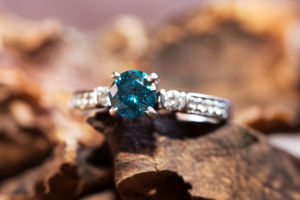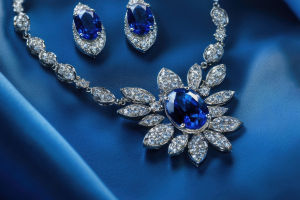Lykkers, what's a timeless accessory that should never miss from your guardrobe? Well, silk scarves of course! Silk scarves are known for their elegance and luxurious feel, making them a staple in fashion for many years.
Their versatility, coupled with the unique properties of different types of silk, makes them a must-have accessory for any wardrobe. This article delves into the various types of silk, why silk scarves are so desirable, and how to choose the best one for your needs.
Understanding the Different Types of Silk
Silk is derived from the cocoons of silkworms, primarily those fed on mulberry leaves. The variety of silk types available comes from differences in the thickness, texture, and dye absorption capabilities of the threads.
Mulberry Silk: The Premium Choice
Mulberry silk is considered the finest silk globally. It is obtained from silkworms that exclusively feed on mulberry leaves. This type of silk is known for its exceptional softness and durability. The shimmering effect and intricate weave make it a popular choice for high-end fashion, especially evening wear and bridal attire.
Crêpe de Chine: Lightweight and Elegant
Crêpe de Chine is a refined and delicate silk fabric. It is lightweight and drapes beautifully, making it ideal for garments like blouses, dresses, and wraps. Known for its smooth texture and subtle sheen, Crêpe de Chine is often favored for romantic and flowy designs, especially in pastel shades or floral prints.
Satin Silk: Glossy and Luxurious
Satin silk is characterized by its smooth, glossy surface that catches the light beautifully. It is often used for glamorous evening dresses, lingerie, and other formal garments. Its rich texture and deep drape make satin silk a favorite for evening wear, where it enhances darker tones with its radiant finish.
Pongé Silk: Perfect for Scarves
Pongé silk is distinguished by its soft, matte finish and slightly irregular threads, giving it a handcrafted, authentic look. It is highly durable and retains its shape over time, making it an excellent choice for accessories like scarves. The fabric is perfect for those seeking an elegant yet casual style, often found in vibrant prints and ethnic patterns. Pongé silk scarves are flexible and adapt perfectly to the contours of the neck and face.
Chiffon Silk: Delicate and Airy
Chiffon is an incredibly lightweight and translucent silk, often used for flowing gowns and fine tops. Its airy texture gives a sense of ethereal beauty, making it ideal for creating romantic, feminine outfits. The fabric's fluidity and lightness make it perfect for layering and creating a soft, billowy effect.
Organza Silk: Crisp and Refined
Organza silk is a transparent, crisp fabric known for its fine texture and delicate structure. Often used for evening wear, bridal dresses, and accessories, organza has a stiff yet graceful quality. The fabric can also be enhanced with embroidery or embellishments such as beads or sequins for a sophisticated, sparkling effect.
How to Choose the Right Silk for Scarves
When selecting a silk scarf, there are a few factors to consider:
Consider the Type of Silk
For scarves, natural 100% silk is ideal, ensuring the fabric's softness and sheen. It is important to verify the quality, ensuring that it is not mixed with synthetic fibers. Choose a fabric like Pongé or Crêpe de Chine for a luxurious feel that lasts.
Look for Certifications
Choose scarves that are certified for ethical and sustainable production, such as Fair Trade or organic certifications. These guarantees assure that the product has been produced responsibly, protecting both the environment and the workers involved in the manufacturing process.
Authenticity and Craftsmanship
Authentic, handmade silk scarves, particularly those with irregular thread textures like Pongé, provide a unique charm and originality. These scarves often come from small artisanal workshops, ensuring quality and craftsmanship.
Choosing the Right Color for Your Skin Tone
The color of your scarf can make a big difference in how it complements your complexion. For lighter skin tones, warm colors like terracotta or peach work well, while cooler tones like lavender and navy suit darker complexions. Opt for classic colors such as black, white, or navy for a timeless look, or choose bolder shades like red or turquoise for a statement piece.
Maintaining Your Silk Scarf
Silk is a delicate fabric that requires gentle care. Hand wash or dry clean your scarf to maintain its integrity. Avoid exposing the scarf to direct sunlight, as it can cause the colors to fade. Always air dry your silk items and iron them on a low setting to preserve their quality.
Alternative Materials for Scarves
While silk is a luxurious material, there are other fabrics that can provide similar qualities at a more affordable price. Cotton scarves are breathable and durable, making them a great everyday option. Wool and cashmere scarves are warm and soft, ideal for cooler weather. For those looking for sustainability, organic cotton or wool are eco-friendly choices.
Conclusion: Silk Scarves as Timeless Accessories
Silk scarves offer a blend of beauty, luxury, and practicality, making them a worthwhile investment for any wardrobe. Whether you choose Pongé for its authenticity or Crêpe de Chine for its fluidity, a quality silk scarf adds elegance to any outfit. With proper care, silk scarves can remain a cherished accessory for years, carrying both style and sentiment with every wear.


